
Roots
To stand at the threshold of understanding ancient societies’ engagement with textured hair is to listen for whispers carried on the winds of time, echoes from the source of our collective human story. It invites us to consider not just how they perceived the physical properties of curls, coils, and waves, but how these strands became woven into the very fabric of identity, status, and spiritual connection. For those of us whose hair carries the memory of ancestral patterns, this inquiry is a pilgrimage to the genesis of our unique heritage, a journey into the visual and tactile languages of antiquity that celebrated the diverse beauty of the human crown. We look back, not with detached observation, but with a reverence for the ways our forebears recognized and honored the distinct characteristics of textured hair long before modern taxonomies were conceived.
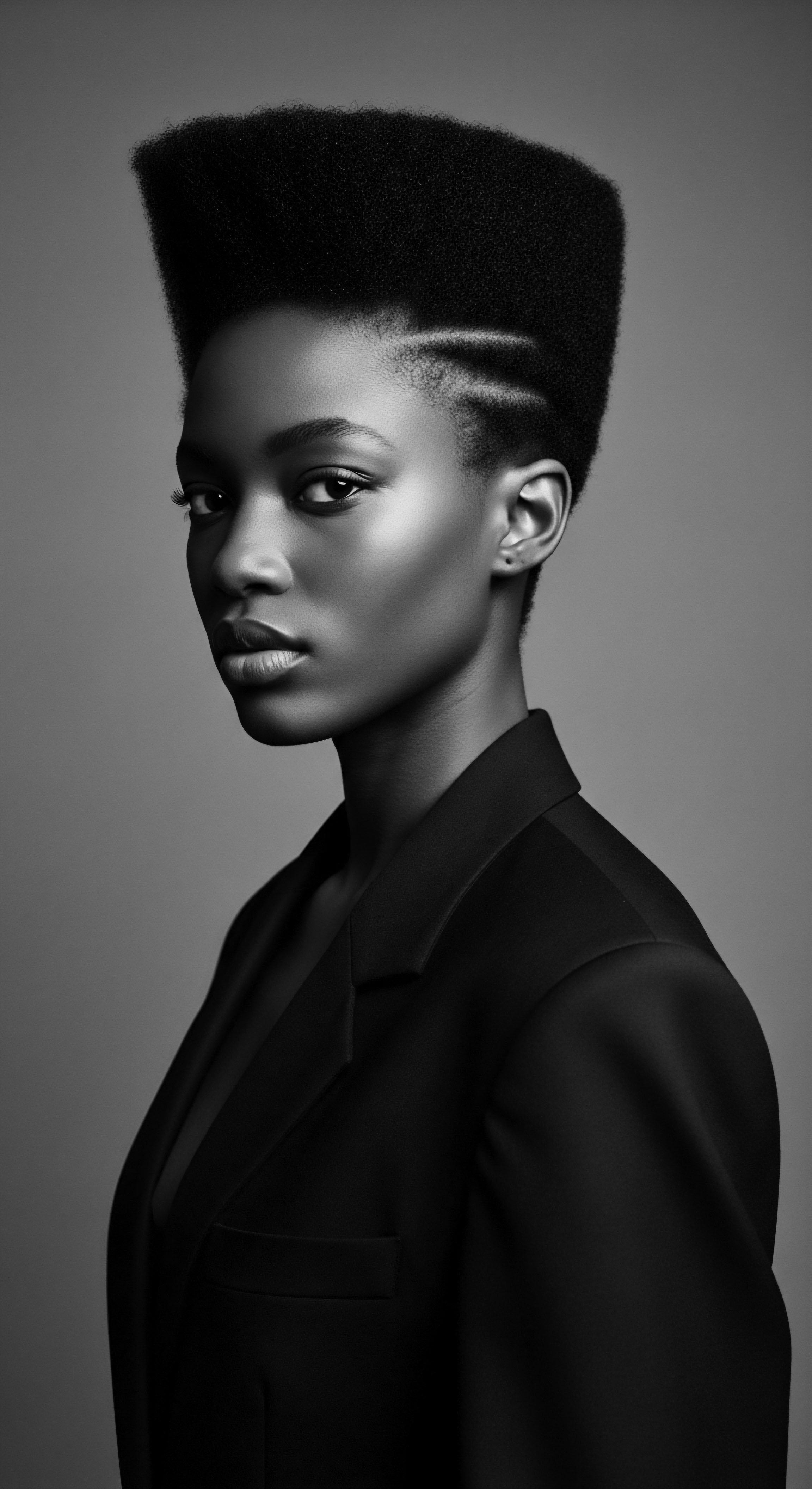
The Language of Texture in Antiquity
How did the peoples of ancient civilizations truly see textured hair? The answer lies less in explicit scientific classifications, which belong to a later era, and more in the lived experience, the visual lexicon, and the social structures of their worlds. Their understanding of hair’s physical properties was practical, gleaned through generations of observation and interaction. They recognized its unique density, its tendency to contract upon drying, and its ability to hold intricate styles, characteristics that set it apart from straighter forms.
For instance, archaeological finds from ancient Egypt and Nubia reveal combs with long, wide-set teeth, tools specifically designed to navigate the natural spring of coiled hair. Such implements speak volumes about a tactile recognition of texture.
In many African civilizations , hair was a profound visual cue, a living canvas that communicated volumes about an individual’s identity. The very act of styling could signify marital status, age, religious devotion, ethnic identity, wealth, and communal rank. The varied textures, ranging from tighter coils to looser curls, were not viewed through a singular lens, but rather as distinct properties within a spectrum of natural beauty. The Wolof, Mende, Mandingo, and Yoruba societies, for example, integrated hair into the fabric of their cultures, recognizing the different textures present among them.
Ancient recognition of textured hair was expressed through practical tools, visual depictions, and the social meanings ascribed to varied hair forms.
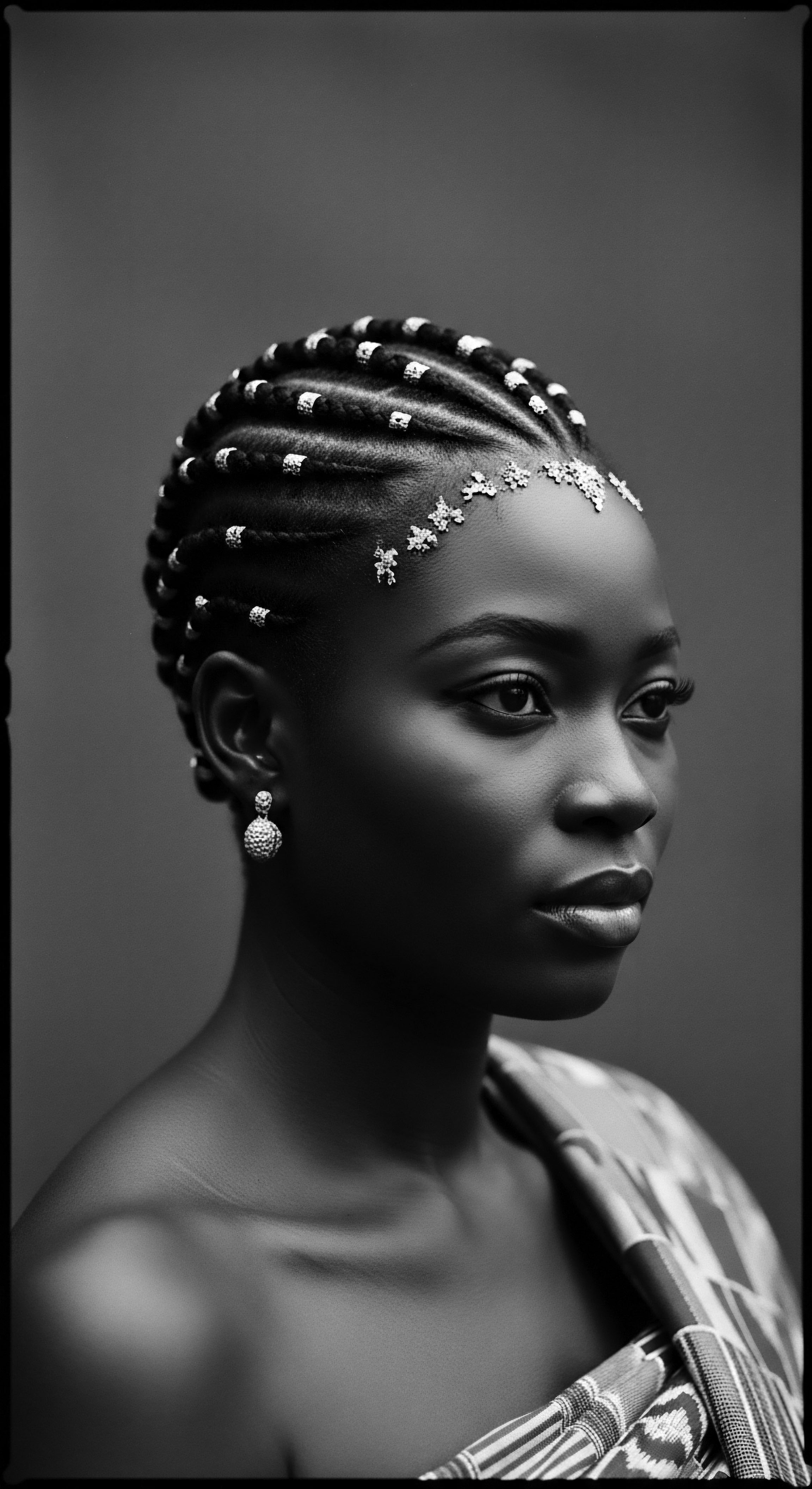
Hair Anatomy Through an Ancestral Lens
While modern science dissects hair down to its follicular shape – revealing how a more oval or flat follicle creates curls and coils, while a round follicle yields straighter strands – ancient societies held an intuitive, observable comprehension of these differences. They understood that certain hair types could be braided intricately against the scalp, or formed into sculptural updos that defied gravity, abilities directly linked to the hair’s unique structural geometry. The very resilience and form of textured hair allowed for stylistic expressions that were not possible with other hair types.
Consider the Evolutionary Advantage of afro-textured hair. Some experts posit that its dense, spiral-shaped curls provided crucial protection against intense ultraviolet (UV) radiation in early human ancestors exposed to extreme sunlight, suggesting it might have been the original hair type of modern humans. This intrinsic biological adaptation would have been observed and implicitly understood in ancient societies living in these environments. The protective qualities of coiling hair, shielding the scalp from harsh sun, would have been a daily, undeniable reality.
- Density ❉ The appearance of greater volume and closeness of strands.
- Coil Pattern ❉ The distinct spirals and kinks, which resist shedding and hold styles well.
- Shrinkage ❉ The characteristic of hair appearing shorter than its actual length due to tight coiling, an attribute that ancient stylists would have worked with and around.
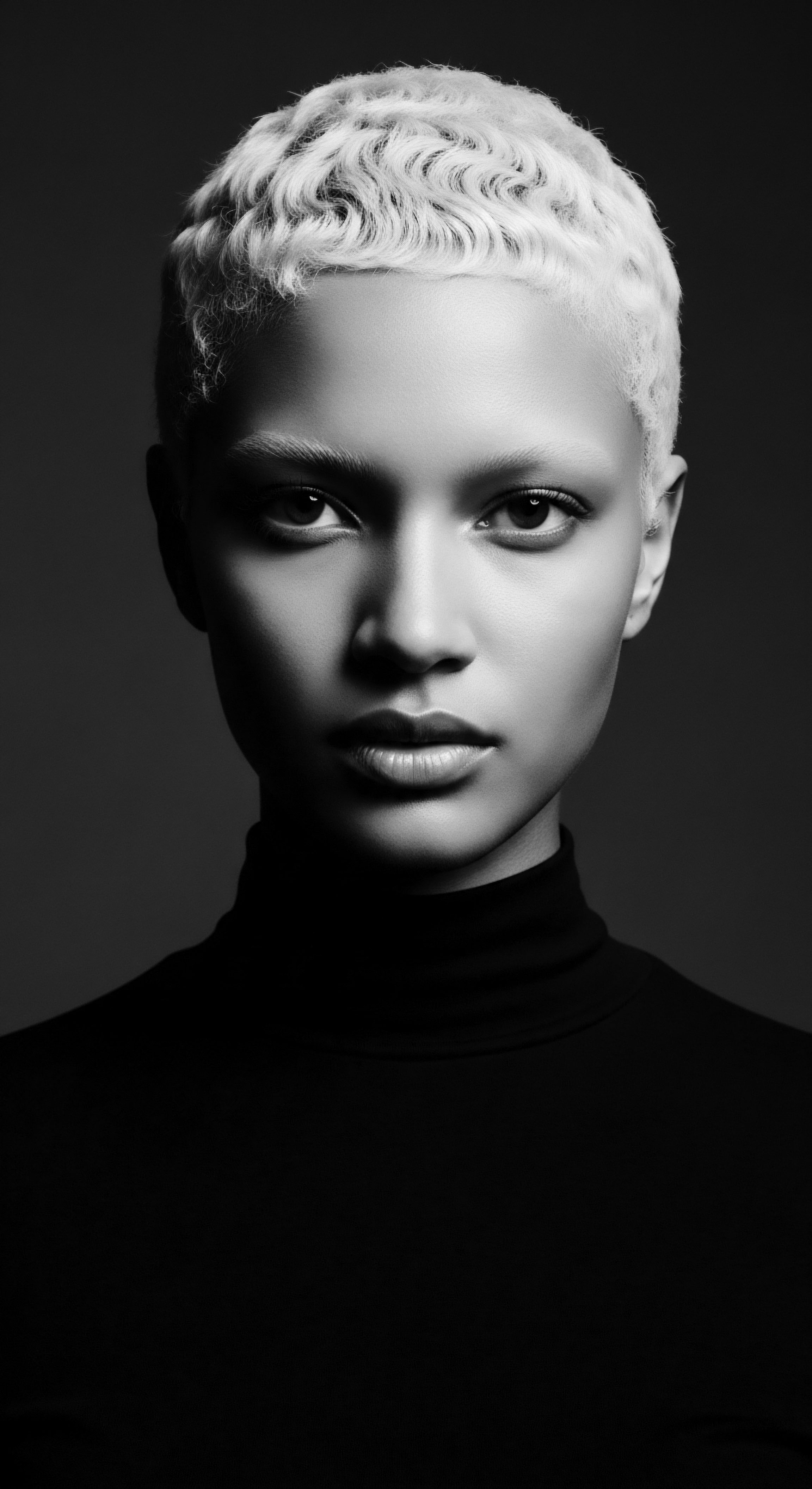
How Did Ancient Societies Name Hair Textures?
The formal linguistic terms for hair texture, as we know them today, are largely modern constructs. For instance, the scientific term ulotrichous, meaning ‘curly-haired,’ derives from ancient Greek, but its systematic application to human taxonomy is a later development (Jean Baptiste Bory de Saint-Vincent, 1825). Yet, within ancient cultures, descriptive words, deeply embedded in their cultural context, served to identify and differentiate hair textures.
The nuances might have been communicated through a rich oral tradition, where specific terms or even analogies described the tightness of a coil, the spring of a curl, or the particular ‘wooliness’ of certain hair types. While we might not possess a comprehensive ancient dictionary of hair typologies, their art and preserved practices speak volumes.
For example, the Meroitic culture in Nubia, known for its rich history and interaction with ancient Egypt, frequently depicted individuals with tightly curled hair, often styled into distinct wigs or natural coiffures. These artistic representations act as a visual glossary, showing how a specific hair type was consistently portrayed and thereby identified within their society. The consistent portrayal of “curly hair wig” in Egyptian depictions of Nubians implies a clear visual and perhaps even a spoken differentiation of this texture.

Ritual
From the very earliest days, the hands of our ancestors reached for the strands of hair, shaping them, adorning them, imbuing them with meaning. The way ancient societies styled textured hair speaks volumes about their understanding of its unique qualities and their reverence for its presence. These were not mere acts of grooming; they were rituals, expressions of cultural identity, protective measures against the elements, and profound connections to the spiritual world. Textured hair, with its inherent strength and versatility, became a medium for artistic expression, a living testament to creativity and resilience across continents and millennia.

Protective Styles and Ancestral Ingenuity
The natural qualities of textured hair – its robustness and ability to interlock – lent themselves particularly well to protective styling. These styles were not only aesthetically pleasing but also served critical functional purposes. In many Ancient African Civilizations, intricate braided styles, such as cornrows, date back as far as 3500 BC.
These were not casual choices; they were intentional, sophisticated methods to shield the hair from sun, dust, and environmental damage, while maintaining its health and length. The longevity of these styles, often lasting weeks, also speaks to a deep practical understanding of hair maintenance without constant manipulation.
The designs themselves held profound social and spiritual meaning. The patterns of cornrows could reflect agricultural order, tribal allegiance, or even coded messages during times of conflict. This demonstrated a sophisticated societal identification with hair beyond its cosmetic appeal. The very act of communal hair styling was a significant social ritual, passing down knowledge and solidifying bonds within communities.
| Society/Region Ancient Egypt |
| Observed Texture Characteristics Coiled, wavy, straight, "woolly" (in depictions of Nubians) |
| Method of Identification/Purpose Wigs for status, hygiene, aesthetic; hair offerings in burials; specific combs |
| Society/Region Nubia |
| Observed Texture Characteristics Tightly curled, "woolly" |
| Method of Identification/Purpose Distinctive natural styles; "Nubian wigs" adopted by Egyptians to mimic this appearance |
| Society/Region Ancient Greece |
| Observed Texture Characteristics Curly, wavy, abundant |
| Method of Identification/Purpose Idealized in art for beauty and divinity; used olive oil for care |
| Society/Region Ancient Rome |
| Observed Texture Characteristics Wavy, curly, straight (often styled) |
| Method of Identification/Purpose Hairstyles for social status; wigs from different hair types (Germanic blonde, Indian black) |
| Society/Region The varied ways ancient cultures recognized and utilized hair's natural texture underscore a deeply intertwined heritage of care, beauty, and identity. |

Tools of Tradition ❉ Shaping Heritage Strands
The tools employed in ancient hair care were a direct reflection of the hair textures they were designed to manage. While early combs might have been simple, crafted from ivory, bone, or wood, their forms evolved to suit diverse hair needs. Long-toothed combs, resembling what we now call afro-picks, have been recovered from ancient Egyptian sites. These are tangible markers of a society that understood the particularities of textured hair and developed specific implements to detangle, section, and style it.
Ancient Roman women, often with wavy or curly hair, used heated metal rods called calamistra to create artificial curls, showing a desire to manipulate hair texture for fashionable ends. This practice, though hazardous, points to an active engagement with altering natural texture, even if it meant a temporary change. Such practices stand in contrast to cultures that predominantly celebrated natural texture, prompting us to consider the range of ancestral attitudes toward hair.

Transformation and Adornment ❉ Beyond the Natural State
Ancient societies adorned their hair with a variety of materials, from natural elements like flowers and leaves to precious metals and jewels. For textured hair, beads, cowrie shells, and intricate wraps were frequently integrated into braided or twisted styles. These embellishments were not merely decorative; they held symbolic weight, enhancing the visual language of the hairstyle.
In Ancient Egypt, wigs were highly prevalent, worn by all genders and social classes as early as 3400 BCE. These wigs, often made of human hair, wool, or plant fibers, were meticulously braided and curled, sometimes incorporating multiple hair donors to achieve desired thickness and texture. The use of wigs, including those mimicking the short, curly hair of Nubian people (“Nubian wigs”), showcases an awareness and appreciation of different hair textures, even when they were adopted or emulated through artificial means. This suggests that textured hair, whether naturally present or recreated, was a recognized and valued aesthetic.
Consider the Mbalantu Women of Namibia, renowned for their incredibly long braided hair, which changes in adornment as they move through stages of life. Their traditions exemplify how styling becomes a life-long narrative, where the very manipulation of hair is an art form rooted in cultural practices and a deep, continuous identification with hair’s capabilities. The meticulous creation and preservation of these lengthy styles are a testament to their profound understanding of textured hair’s ability to grow and be maintained over generations.
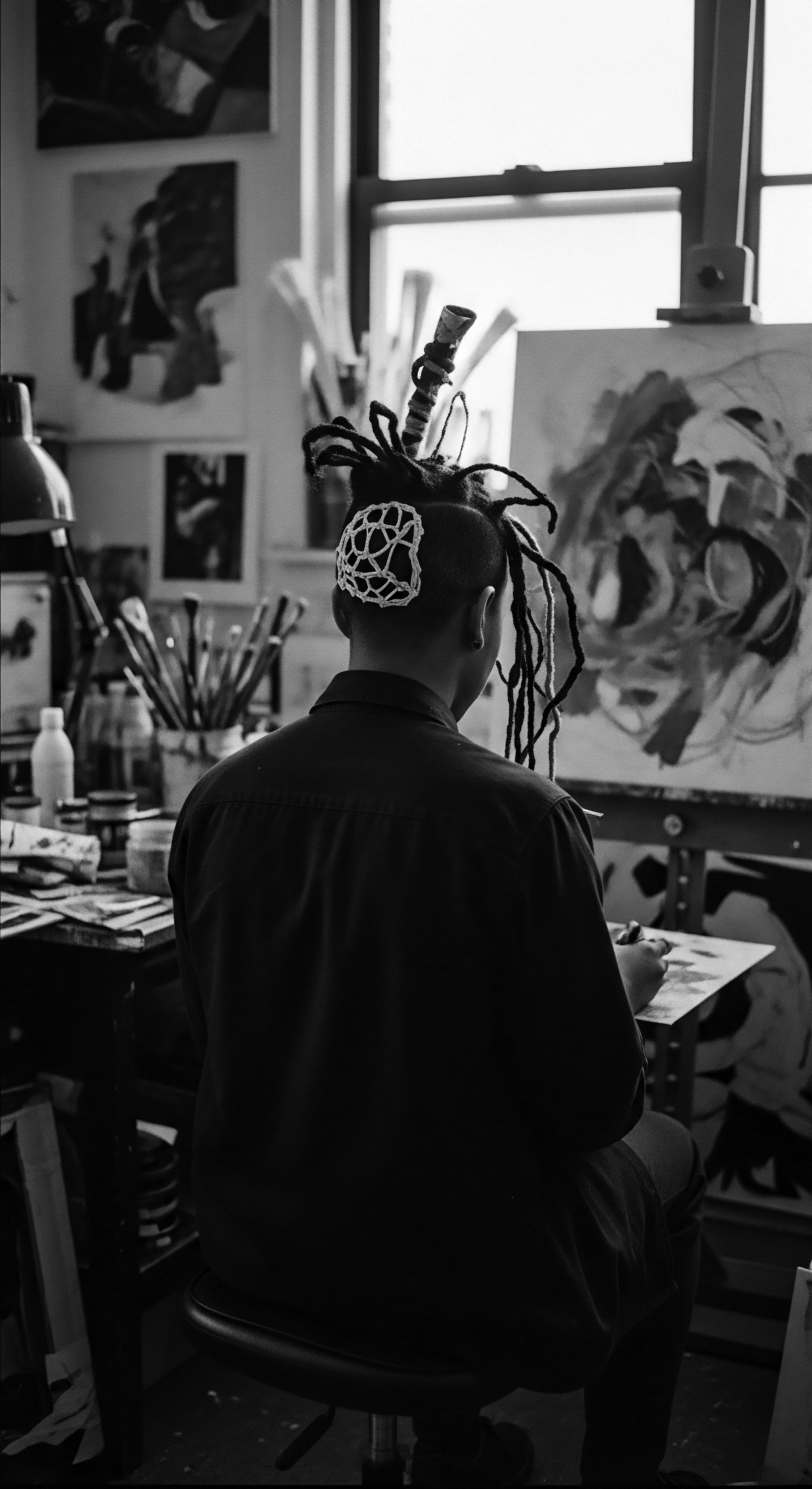
Relay
The thread of textured hair heritage stretches unbroken, a continuous relay of ancestral wisdom passed through generations. How ancient societies nurtured and addressed the specific needs of textured hair illuminates a deep, intuitive understanding of holistic well-being, long before modern scientific inquiry formalized these practices. Their regimens were intertwined with the rhythms of nature, community, and spirit, recognizing hair not as a separate entity, but as an integral aspect of a complete self. These practices inform our contemporary journey towards holistic hair health, connecting us to a timeless legacy of care.

Ancestral Regimens and Hair Health Philosophies
The approach to hair care in antiquity was often rooted in observational knowledge of the natural world and the properties of botanicals. For those with textured hair, maintaining moisture, promoting growth, and preventing breakage were critical concerns. Ancient societies, particularly those in Africa, devised intricate systems of care utilizing readily available ingredients from their environments.
These traditional formulations, often consisting of natural butters and botanical blends, were not only for styling but for preserving hair health against environmental stressors. The wisdom embedded in these regimens speaks to a deep connection with the earth and a practical science born from necessity.
For instance, the use of Natural Oils and Fats, derived from indigenous plants and animals, was a widespread practice. These substances served as conditioning agents, emollients, and protective barriers. Their application helped to seal in moisture, a fundamental requirement for textured hair prone to dryness due to its coiled structure which impedes the natural oils from traveling down the hair shaft effectively. The knowledge of which plants possessed softening or strengthening properties was a form of ancestral pharmacopoeia, passed down through family lines and communal practices.
How did these societies address specific concerns like breakage or dryness for varied textured hair?
Their solutions were often preventative and holistic. Hair was regularly cleansed, though perhaps not with harsh soaps as we understand them today, but with gentle concoctions of clays, herbs, and plant extracts that respected the hair’s delicate moisture balance. The emphasis on protective styles, as discussed earlier, also served as a primary method for length retention and minimizing daily manipulation that could lead to damage. These practices suggest a long-standing understanding that textured hair thrives with minimal interference and consistent, gentle nourishment.
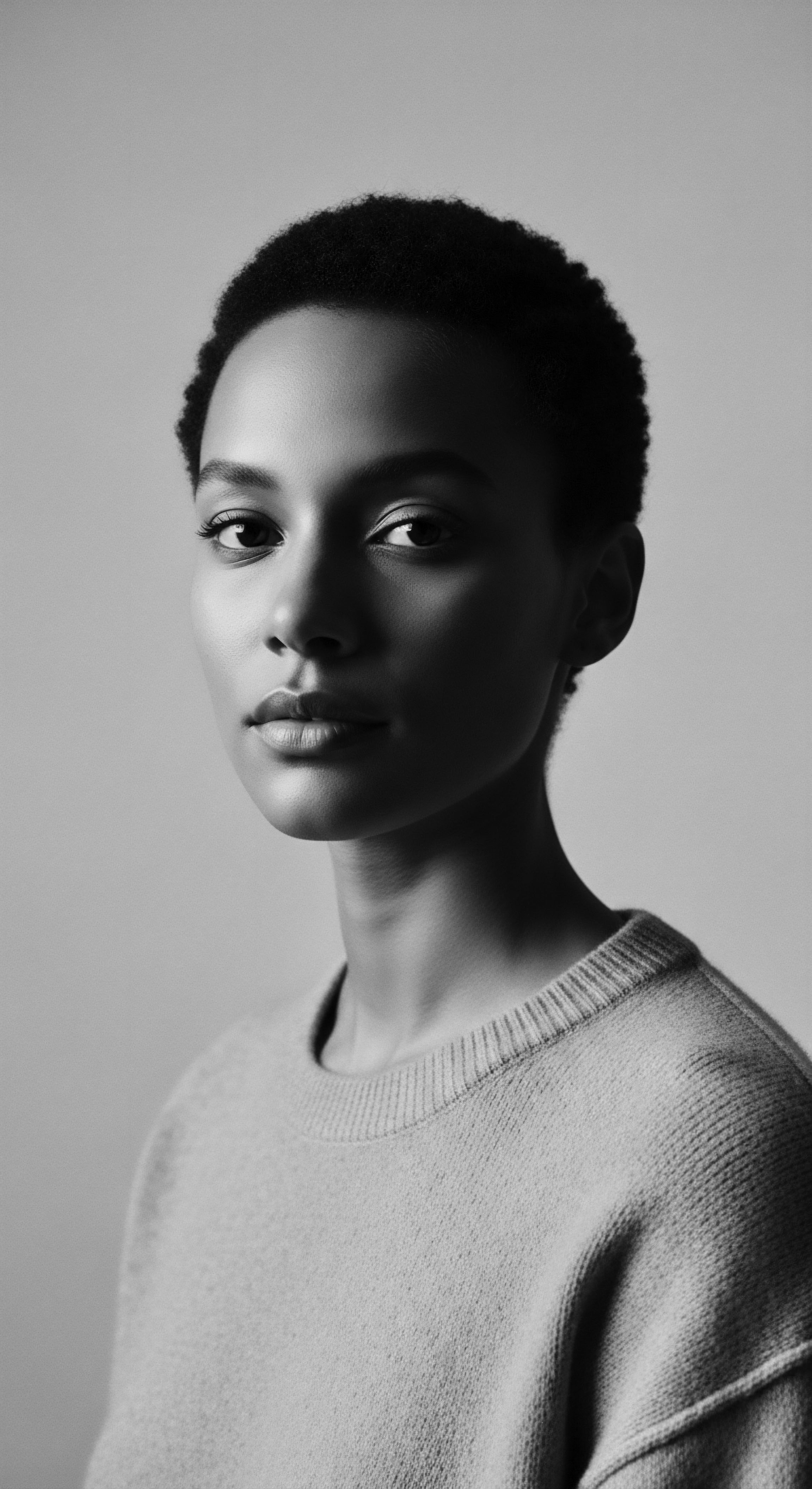
Nighttime Sanctuaries and Sacred Sleep
The ritual of protecting hair during sleep is not a modern invention; its roots stretch deep into ancient practices. While specific artifacts directly detailing “bonnet wisdom” from every ancient culture may be scarce, the underlying principle of preserving intricate hairstyles and maintaining hair’s condition during rest was undoubtedly recognized. For societies where hair was a symbol of status or identity, protecting elaborate styles from disarray was a practical necessity.
In many African communities , where complex braids and twisted styles often took hours or even days to create, their preservation was paramount. While we might associate satin bonnets with contemporary care, the historical precedent likely involved wrapping hair in soft fabrics, using head coverings, or creating specialized sleeping arrangements to keep styles intact. This reflects an early understanding of friction’s impact on delicate hair strands and the wisdom of safeguarding textured hair against unnecessary wear and tear. It underscores a continuous, unbroken tradition of care that spans generations.
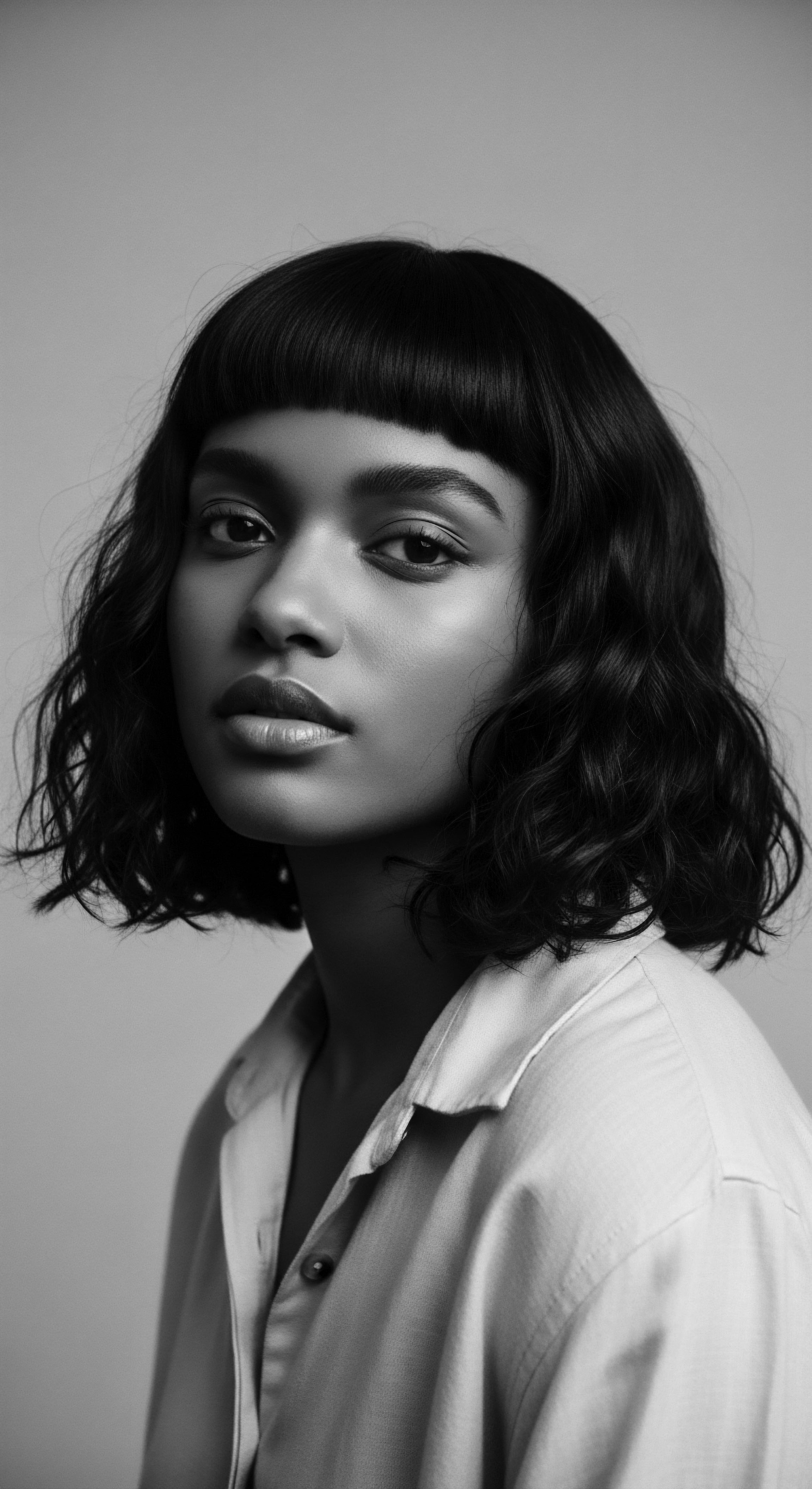
Traditional Ingredients and the Earth’s Bounty
The spectrum of ingredients utilized by ancient societies to identify and care for textured hair stands as a testament to their profound botanical knowledge. These were not random choices, but informed selections based on generations of empirical observation. The specific properties of these natural resources were understood and applied to address the unique needs of curls, coils, and kinks.
- Shea Butter ❉ Derived from the nuts of the African shea tree, this rich emollient was a staple for conditioning and sealing moisture into textured hair, deeply hydrating and protecting strands from environmental stressors.
- Palm Oil ❉ A versatile oil, often used for its nourishing qualities, contributing to hair’s shine and suppleness.
- Clay and Herbal Washes ❉ Natural clays, sometimes mixed with plant extracts, were used for gentle cleansing, removing impurities without stripping hair of its vital oils.
Archaeological evidence and historical texts from various regions suggest a consistent focus on enriching the hair. For example, a study of mummified hair from ancient Egypt revealed that many individuals had their hair coated with a fatty substance, indicative of intentional care and preservation practices. These practices, while serving a ritualistic purpose in some contexts, also speak to an underlying knowledge of how to maintain hair’s integrity over time. The materials used, such as beeswax and resin in ancient Egyptian wigs, show an understanding of hold and preservation for textured styles.
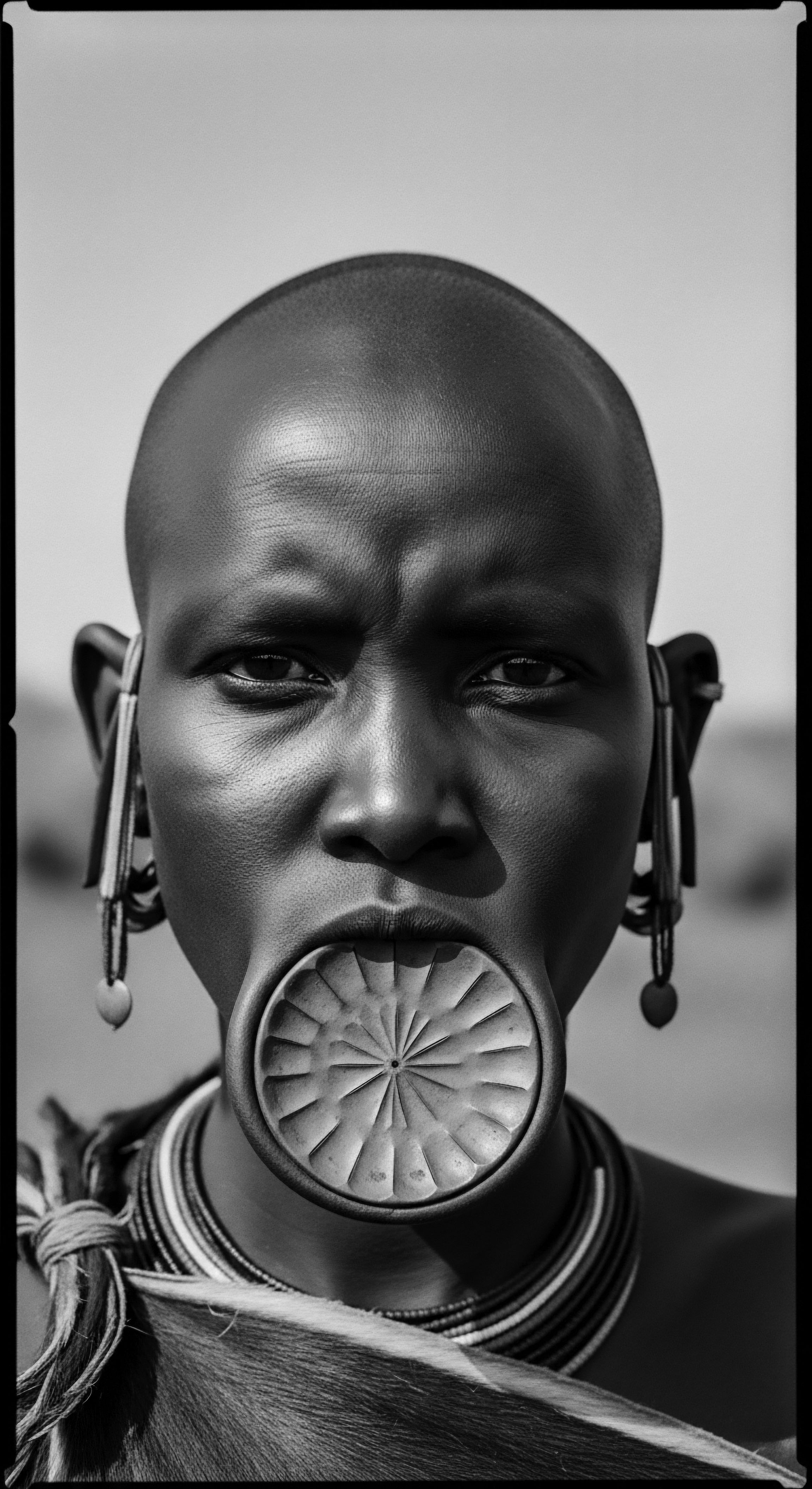
How Did Ancient Societies Adapt Hair Care Based on Climate and Lifestyle?
Hair care in antiquity was deeply responsive to environmental conditions and daily life. In sun-drenched regions, strategies to protect hair from desiccation and UV damage were common. This included the liberal application of protective oils and the adoption of styles that covered the scalp, such as thick braids or elaborate headwraps.
For nomadic groups, styles that required minimal maintenance and offered long-term protection were practical and prevalent. The resilience of textured hair, capable of holding intricate styles for extended periods, was a significant advantage in these contexts.
Moreover, diet and overall well-being played an undeniable role in hair health, even if not explicitly codified as “holistic hair wellness.” Ancestral diets rich in nutrients, combined with lifestyles that were often more physically active and connected to nature, would have naturally supported healthier hair growth and vitality. The interconnectedness of internal health and external appearance was implicitly understood, a foundational aspect of ancestral wisdom that continues to resonate today within discussions of holistic care for textured hair.

Reflection
As we close this contemplation on how ancient societies engaged with textured hair, a profound realization settles ❉ the story of these strands is a living chronicle, an archive held within each coil and curl. The pathways our ancestors walked, their ingenious methods of identification and care, and the deep cultural meanings they ascribed to hair, all echo in the present. This understanding is not simply a historical exercise; it is an affirmation of a heritage that pulses with resilience, ingenuity, and a profound sense of self. The rich history of textured hair, from its elemental biology to its role in shaping communal identity, reminds us that the quest for beauty and well-being has always been a journey of self-discovery, deeply rooted in ancestral wisdom.
The recognition of textured hair in antiquity was a knowing woven from observation, practicality, and artistic expression. Whether through the design of their tools, the symbolism of their adornments, or the very structure of their communal rituals, ancient peoples possessed an intrinsic understanding of hair’s unique properties. This knowledge, passed through generations, built a foundation of care that celebrated the hair’s natural form, offering protection and expressing belonging. The enduring practices, reimagined and adapted over centuries, connect us to a legacy of custodianship over our strands.
Each twist and turn of textured hair carries the echoes of those who came before us, a continuous flow of wisdom that transcends time. This shared heritage invites us to see our hair not merely as a physical attribute, but as a vibrant connection to a deep, collective past, a source of strength and identity for generations to come.

References
- Ashby, S.P. (2016). Archaeologies of Hair ❉ an introduction. Internet Archaeology, 42.
- D’Ambra, E. (2007). Roman Women. Cambridge University Press.
- Fletcher, J. (1998). Ancient Egyptian Hair ❉ A Study of Its Physical, Stylistic and Cultural Aspects. University of Manchester Press.
- Hrdy, D. (1978). Analysis of hair from Predynastic Egyptian mummies. Journal of Human Evolution, 7(5), 459-462.
- Konstan, D. (2013). Beauty, Love and Art ❉ The Legacy of Ancient Greece. Schole, 7(2), 333-370.
- Léach, E.R. (1958). Magical Hair. Journal of the Royal Anthropological Institute of Great Britain and Ireland, 88(2), 147-164.
- Marshall, A. (2025). The magic and power of hair in ancient Egypt. The Past .
- Petrie, W.M.F. (1891). Illahun, Kahun and Gurob. David Nutt.
- Walker, A. (1997). Andre Talks Hair. Simon & Schuster.
- Walker, K. (2013). The Science of Black Hair ❉ A Comprehensive Guide to Textured Hair Care. Self-published.
